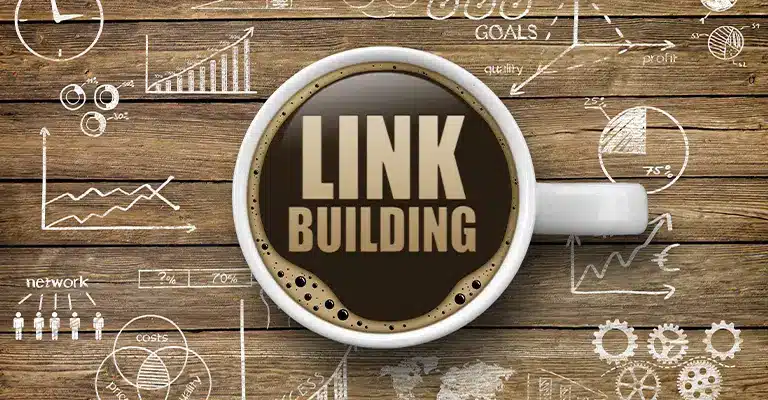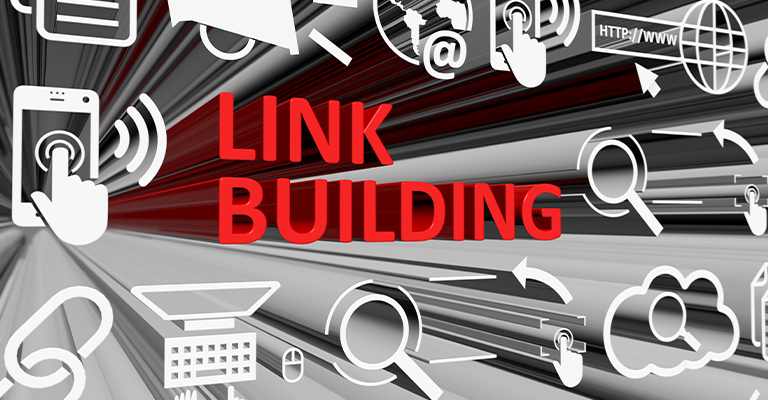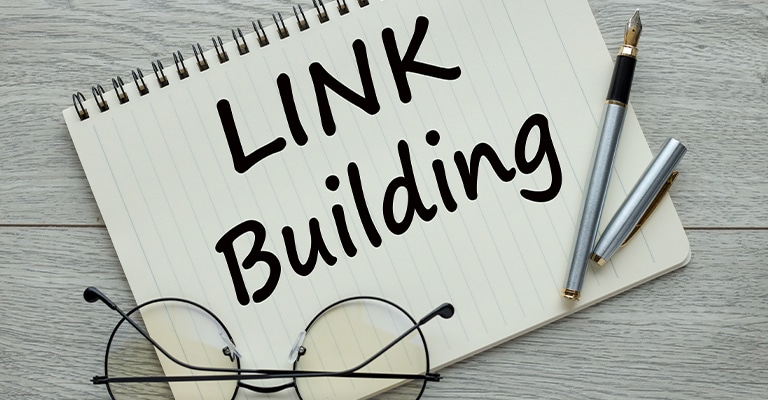TL; DR: A link building strategy is your systematic approach to earning quality backlinks that boost SEO rankings. Focus on quality over quantity by targeting relevant and authoritative sites within your niche. Utilize proven techniques such as guest posting, broken link building, and HARO outreach. Set measurable goals, track referring domains and traffic metrics, and avoid black-hat tactics, such as buying links. Success comes from building genuine relationships and creating valuable content that naturally attracts links. Start with one technique, perfect it, then expand your approach.
- What Is a Link Building Strategy?
- Why Your Link Building Strategy Matters
- Core Components of Link Building Strategy
- Types of Links to Target
- Building Your Link Building Strategy
- Effective Link Building Techniques
- Tools for Your Strategy
- Measuring Success
- Common Mistakes to Avoid
- Conclusion
Building quality backlinks remains crucial for SEO success. Yet many marketers struggle to create an effective link building strategy. Without proper planning, you waste time chasing ineffective tactics. That’s why you need a systematic approach that delivers consistent results.
This guide breaks down everything you need to know. First, you’ll learn how to develop a strategy tailored to your specific goals. Then, we’ll cover proven techniques that successful marketers use daily.
Whether you’re starting fresh or improving existing efforts, you’ll find actionable insights here. Moreover, you’ll discover how to avoid common pitfalls that waste time and resources. By the end, you’ll have the knowledge to transform your approach to building valuable links that boost your rankings. Let’s begin by understanding what a link building strategy involves.
What Is a Link Building Strategy?

A link building strategy is your planned approach to earning quality backlinks. Think of it as your roadmap for getting other websites to link to yours. These incoming links act like votes of confidence for search engines. As a result, your site gains authority and visibility.
Your strategy outlines specific tactics you’ll use. Additionally, it defines which websites you’ll target for links. It also includes your outreach methods and success metrics. Together, these elements create a cohesive plan.
Key elements include:
- Target website identification
- Content creation plans
- Outreach templates
- Quality standards
- Timeline and milestones
Without a clear strategy, you’re essentially throwing darts blindfolded. Random link building rarely produces meaningful results. Instead, you need a systematic approach that aligns with your business goals.
Furthermore, search engines view links as endorsements. Therefore, quality matters more than quantity. Your strategy should focus on earning links from relevant, authoritative sources. Now that you understand the basics, let’s explore why this matters for your success.
Why Your Link Building Strategy Matters

Links remain one of Google’s top ranking factors. Furthermore, they drive referral traffic to your site. Without a solid link building strategy, you struggle to compete in crowded markets. This is why strategic planning makes all the difference.
Benefits of strategic link building:
- Higher search engine rankings
- Increased domain authority
- More referral traffic
- Enhanced brand visibility
- Better relationships with industry peers
To illustrate this, consider two competing websites offering similar content. However, one has 50 quality backlinks while the other has five. Predictably, the site with more quality links typically ranks higher. This advantage compounds over time.
Beyond rankings, your strategy also saves time and resources. Instead of chasing every opportunity, you focus on high-value targets. Consequently, this targeted approach produces better results with less effort.
Additionally, quality links provide traffic beyond SEO benefits. When relevant sites link to you, their audience discovers your content. Interestingly, this referral traffic often converts better than organic search visitors. With these benefits in mind, let’s examine the core components of an effective strategy.
Core Components of Link Building Strategy
Every successful link building strategy rests on fundamental principles. Understanding these core components enables you to make more informed decisions about which opportunities to pursue. Most importantly, these elements separate effective strategies from wasted efforts. Let’s explore each component in detail.
Quality Over Quantity
First, your link building strategy must prioritize link quality. One link from a respected industry site outweighs dozens from low-quality directories. In fact, search engines have become sophisticated at detecting link quality. This evolution changes how we approach link building.
Quality indicators include:
- High domain authority
- Relevant content
- Real traffic
- Editorial standards
- Natural link placement
With these factors in mind, focus on sites your target audience visits. These links provide both SEO value and referral traffic. Meanwhile, avoid link farms and paid link schemes entirely. The risks far outweigh any potential benefits.
Relevance and Authority
While quality matters, relevance matters equally in link building. A link from a smaller niche blog might outperform one from a larger general site. For this reason, your strategy should effectively balance both factors.
Assess relevance by checking:
- Industry alignment
- Audience overlap
- Content similarity
- Geographic location (if applicable)
- Topic expertise
Authority comes from established sites with strong reputations. However, don’t ignore newer sites showing growth potential. Building relationships early can pay dividends later. As we move forward, let’s identify the specific types of links worth pursuing.
Types of Links to Target

Not all backlinks provide equal value to your site. Some drive immediate traffic while others boost long-term authority. Your link building strategy should distinguish between different link types and prioritize accordingly. Understanding these categories helps you allocate resources effectively and achieve better results.
Editorial Links
Among all link types, editorial links carry the most weight. Publishers link to your content because it adds value for their readers. Consequently, these links appear natural to search engines. They also tend to drive engaged traffic.
To earn editorial links, create exceptional resources. Think of comprehensive guides, original research, or unique tools. When you fill knowledge gaps in your industry, links follow naturally.
Examples of link-worthy content:
- Industry studies with original data
- Free tools or calculators
- Comprehensive how-to guides
- Expert roundup posts
- Infographics with valuable insights
Resource Page Links
Beyond editorial links, resource pages offer excellent opportunities. Many websites maintain resource pages for their audiences. These curated pages list helpful tools, guides, and websites. Therefore, getting listed provides valuable, relevant backlinks.
To find these opportunities, search your industry plus phrases like “resources” or “useful links.” Once you identify relevant pages, reach out with a personalized pitch. Most importantly, explain why your content benefits their audience specifically.
Your pitch should be brief and valuable. First, show that you’ve reviewed their existing resources. Then, explain how your content fills a gap. This approach yields better response rates. Now, let’s discuss how to build your strategy from the ground up.
Building Your Link Building Strategy
Creating your link building strategy requires careful planning and structure. Without a solid foundation, even the best tactics fail to deliver results. You need a framework that guides your efforts while remaining flexible enough to adapt. The following steps will help you build a strategy that delivers consistent results.
Set Clear Goals
Every successful strategy begins with specific, measurable goals. Vague objectives like “get more links” won’t guide your efforts effectively. Instead, create concrete targets with timelines. This clarity drives focused action.
Example goals:
- Earn 10 links from industry publications within three months
- Increase referring domains by 25% this quarter
- Build relationships with 5 key influencers
- Achieve 20 guest post placements
Additionally, your goals should align with broader marketing objectives. If brand awareness is priority, focus on high-traffic sites. Similarly, local businesses should prioritize local directory and publication links. This alignment ensures your efforts support overall business growth.
Research Your Competition
After setting goals, analyze your competitive landscape. Competitor backlinks reveal valuable opportunities you might have missed. Moreover, this research shows which tactics work in your industry. Use these insights to refine your approach.
Research steps:
- Identify top 5 competitors
- Analyze their backlink profiles
- Find common link sources
- Identify gaps you can exploit
- Note successful content types
As you analyze, look for patterns in successful link building. Do competitors use guest posting heavily? Are they featured in industry roundups? Understanding these patterns shapes your approach. With clear goals and competitive insights, you’re ready to implement specific techniques.
Effective Link Building Techniques

Multiple tactics can strengthen your link building strategy. However, not every technique suits every situation. The key is choosing methods that match your resources and expertise. These proven techniques help you earn quality backlinks while building valuable industry relationships. Let’s explore the most effective options.
Guest Posting
Despite evolving SEO trends, guest posting remains highly effective. You provide valuable content to other sites in exchange for author bio links. When done correctly, everyone benefits. The host site gets quality content while you gain exposure and links.
To succeed, target sites your audience reads. Furthermore, ensure your content matches their quality standards. Generic, low-quality guest posts can harm your reputation. Therefore, focus on delivering exceptional value.
Guest posting best practices:
- Research site guidelines thoroughly
- Pitch unique, relevant topics
- Deliver exceptional content
- Build relationships beyond one post
- Promote published posts actively
Broken Link Building
While guest posting requires content creation, broken link building leverages existing assets. This technique involves finding broken links on relevant sites. You then suggest your content as a replacement. Since you’re helping fix their site, owners often respond positively.
Start by using tools to find broken links in your niche. Focus on resource pages and popular articles first. Next, create or identify suitable replacement content from your existing library.
When reaching out, your message should be helpful, not pushy. First, mention the broken link you found. Subsequently, suggest your resource as one possible replacement. This helpful approach builds goodwill.
HARO Outreach

Finally, consider Help a Reporter Out (HARO) for high-authority links. This platform connects journalists with expert sources. By providing valuable quotes, you earn mentions from major publications. Although time-intensive, this technique delivers premium backlinks.
Success requires daily monitoring of HARO emails. When relevant opportunities appear, respond quickly with detailed answers. Include your credentials to establish expertise immediately.
HARO success tips:
- Respond within hours
- Provide complete, quotable answers
- Include relevant credentials
- Follow journalist guidelines exactly
- Don’t over-promote yourself
Each technique offers unique advantages. Choose based on your strengths and available time. Next, let’s explore tools that streamline these processes.
Tools for Your Strategy
The right tools streamline your link building strategy significantly. While manual work remains important, tools handle time-consuming research tasks efficiently. As a result, you can focus on relationship building and content creation. Let’s explore essential tools that support your efforts.
Essential tool categories:
- Backlink analysis (Ahrefs, SEMrush)
- Email outreach (Pitchbox, BuzzStream)
- Broken link finders (Check My Links)
- Content research (BuzzSumo)
- Contact finding (Hunter.io)
When starting out, invest in one comprehensive SEO tool first. This provides the foundation for link research and competitor analysis. Then, add specialized tools as your strategy evolves. While free tools work initially, paid versions offer better data and features.
However, remember that tools support your strategy, not replace it. Human judgment and relationship building remain crucial for success. Use tools to find opportunities efficiently. Then personalize your approach for better results. With proper tools in place, measuring success becomes much easier.
Measuring Success

Track specific metrics to evaluate your link building effectiveness. Without proper measurement, you can’t optimize your strategy or prove ROI. Moreover, tracking helps identify what works and what doesn’t. Focus on metrics that directly reflect your goals.
Key metrics to monitor:
- Number of referring domains
- Domain authority changes
- Referral traffic volume
- Link quality scores
- Outreach response rates
To maximize insights, review metrics monthly to spot trends. Are certain techniques producing better results? Which sites send the most qualified traffic? Additionally, track which content types attract the most links. Use these insights to refine your approach continuously.
Furthermore, don’t just count links blindly. One high-quality link might outperform twenty low-quality ones. Therefore, assess both quantity and quality regularly. This balanced view ensures sustainable growth. As you track progress, watch for common mistakes that could undermine your efforts.
Common Mistakes to Avoid
Even experienced marketers can sabotage their link building strategy with preventable errors. Learning from common mistakes saves time and protects your site’s reputation. More importantly, avoiding these pitfalls keeps your site safe from penalties. Let’s examine the most dangerous mistakes to avoid.
Critical mistakes:
- Buying links from link farms
- Over-optimizing anchor text
- Ignoring relevance for authority
- Sending mass outreach emails
- Creating thin guest post content
First and foremost, paid link schemes might seem tempting for quick results. However, search engines actively penalize sites using them. The damage can take months to recover from. Instead, focus on earning links through value creation.
Similarly, avoid aggressive anchor text optimization. While exact-match anchors seem logical, they appear unnatural in bulk. Natural link profiles include varied anchor text patterns. Therefore, use brand names, URLs, and natural phrases throughout your profile.
Finally, mass outreach emails rarely succeed and often damage your reputation. Personalized messages get significantly better response rates. Although it takes more time, quality outreach builds lasting relationships. Take time to understand each site before reaching out. This investment pays off in the long term.
Conclusion
Throughout this guide, you’ve discovered how to build an effective link building strategy from scratch. We’ve covered everything from fundamental principles to advanced techniques. You now understand the core components of successful link acquisition. Most importantly, you have a complete framework for implementation.
To recap, start by auditing your current backlink profile. This baseline helps you identify strengths and weaknesses. Then, establish realistic goals based on your available resources. Choose two or three techniques that match your strengths perfectly. As you gain experience and confidence, gradually expand your approach.
Above all, remember that link building is relationship building at its core. Focus on providing genuine value to other sites and their audiences. When you prioritize value creation, quality connections naturally follow. These relationships lead to quality links over time. Your next step is clear: pick one technique from this guide and implement it today. Whether it’s guest posting or broken link building, action matters most. Consistent effort combined with the right strategy produces remarkable results. Start small, track your progress, and refine as you learn.




